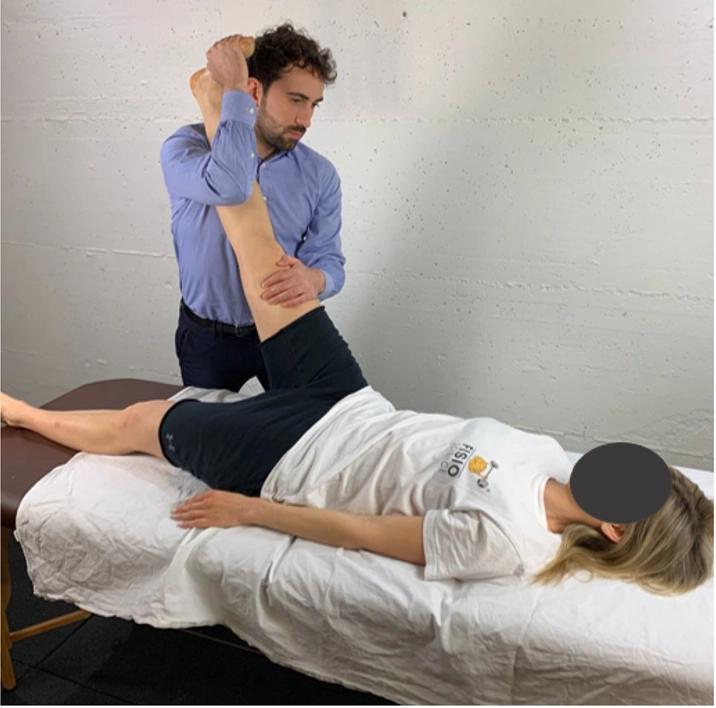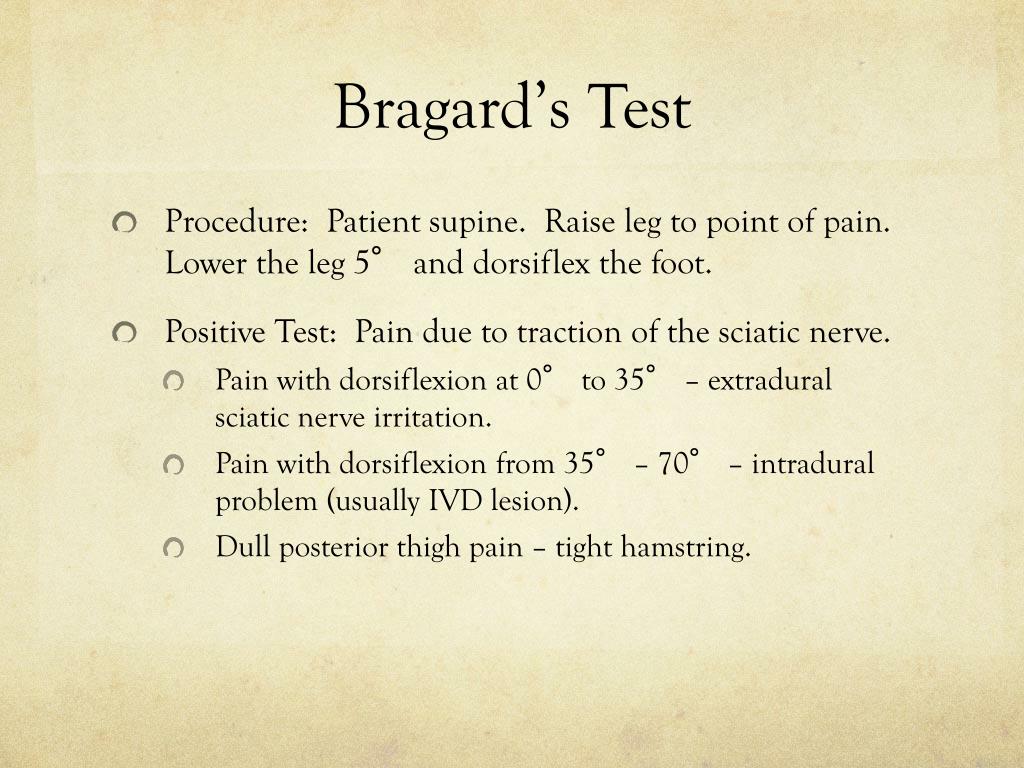
Manovra di Lasegue cosa mi permette di valutare? FisioScience
The purpose is to describe active and passive physical maneuvers that provoke or alleviate lumbosacral radiculopathy and/or sciatica to demonstrate how these maneuvers function in common orthopedic and neurological tests/signs. Methods

PPT Lumbar Spine PowerPoint Presentation, free download ID335139
Bragard's sign is a physical examination technique used to assess for nerve irritation or compression in the lower back and legs, specifically the sciatic nerve. Here's how you can perform it: Position the patient in a supine position on an examination table.

View 25 Tes Bragard Sicard trendqship
The Straight Leg Raise test and the Bragard test performed in a multiple parallel way and the combined test of the Slump Test and the Dejerine's triad have clinical validity to discard lumbar or lumbar-sacral radiculopathy. lumbar radiculopathy; magnetic resonance; neurodynamic tension tests; orthopedic tension tests. Low Back Pain / diagnosis*

ASSESSMENT AND DIAGNOSIS Overview Overview of Acute Low
PMCID: PMC5883635 DOI: 10.1016/j.jcm.2017.10.004 Objective: The purpose of this study was to assess the diagnostic accuracy of a modified Bragard test compared with the straight leg raise (SLR) test in patients presenting with electrodiagnostic evidence of L5 and S1 nerve root compression.

Bragard Test / SIGNO DE BRAGARD Blog de Fisioterapia Bragard usa
In this video, I explain and demonstrate Bragard's Sign, a special test that is an extension of the straight leg raise test, which is used to further rule up.

Prueba de Bragard Prueba de Bragard rodilla YouTube
Bragard's Test. Demonstration. Explanation A confirmatory test following a positive Straight Leg Raise Test. Confirms suspicion of lower lumbar radiculopathy or sciatic nerve irritation. Also Known As. Bragard's Sign; Indication. Low back pain with unilateral radiation of symptoms to the posterior thigh, calf, or foot

Lasegue and Braggards Test YouTube
Introduction Sciatica refers to radiating pain along the course of the sciatic nerve from the lower back or buttock to one or both legs or an associated lumbosacral nerve root. A common mistake is referring to any low back pain or radicular leg pain as sciatica [1].

Figure 66 from Low Back Pain. Semantic Scholar
The Bragard's sign (also: Braggard's test) is a manual test to diagnose and used to evaluate whether lumbar and /or ischiatic pain originates from lumbosacral radiculopathy, disc herniation, sciatica, low back pain, cauda equina syndrome, slipped disc, etc. Meniscal injuries may be the most common knee injury. Meniscus tears are sometimes related to trauma, but significant trauma is not.

Prueba de Bragard YouTube
The Bragard's sign (also: Braggard's test) is used to evaluate whether lumbar and/or ischiadic pain originates from lumbosacral radiculopathy (e.g. disc herniation causing nerve root compression). Technique The patient is in supine position.

Straight Leg Raise or Lasegue's Test and "Bragard's Sign" for Lumber
Here with @OrthoEvalPal I talk today about How to Perform the Braggard's Sign/Test for Lumbar Radiating Pain. I will discuss how it is different from the SLR.

Lumbar Spine Exam BragardSLR Test for Herniated Disc/Lumbar
In Bragard's test, external tibial rotation and knee extension bring the meniscus more anterior: if tenderness is felt along the joint line palpation, an articular surface irregularity (i.e. chondral lesion) or a meniscal tear is suspected.

Teste de Lasègue e Teste de Bragard Nervo Ciático YouTube
Conclusions: The Straight Leg Raise test and the Bragard test performed in a multiple parallel way and the combined test of the Slump Test and the Dejerine's triad have clinical validity to discard lumbar or lumbar-sacral radiculopathy. Keywords: lumbar radiculopathy, neurodynamic tension tests, orthopedic tension tests, magnetic resonance Go to:

Lumbar Spine Orthopedic Tests Lumbar Anatomy Erector Spinae
The Bragard test is qualified as positive if the pain reappears when the foot is passively brought into dorsiflexion while the leg is lowered (compared to the appearance of characteristic pain during the Lasègue sign). This would indicate nerve involvement in the origin of the patient's pain.

Bragard's Sign Rationale & Interpretation YouTube
Lasegue sign or straight leg raising test (SLRT) is a neurodynamic exam to assess nerve root irritation in the lumbosacral area. [1] It is an integral element to the neurological exam for patients presenting with low back pain with or without radicular pain. The other less commonly used name is Lazarevic sign. Historical Evolution

Doctor Performing Bragard Test Stock Photo Download Image Now iStock
The straight leg raise test (SLR) and the crossed straight leg raising test (CSLR) are physical maneuvers that provoke the lumbosacral nerve roots. These tests are often used in making decisions about diagnostic imaging or hospital referral. 8 Another complementary physical maneuver is the Bragard test. It is used when the SLR test is positive.

Bragard Test / Sciatic nerve assessment, Lasegues test and Bragards
The Modified Bragard test is easy to perform and has an acceptable test performance, which can help to increase the discriminative power of clinical examination in patients with L5 or S1 nerve root compression who exhibit a negative SLR test result, especially in the acute phase of disease.